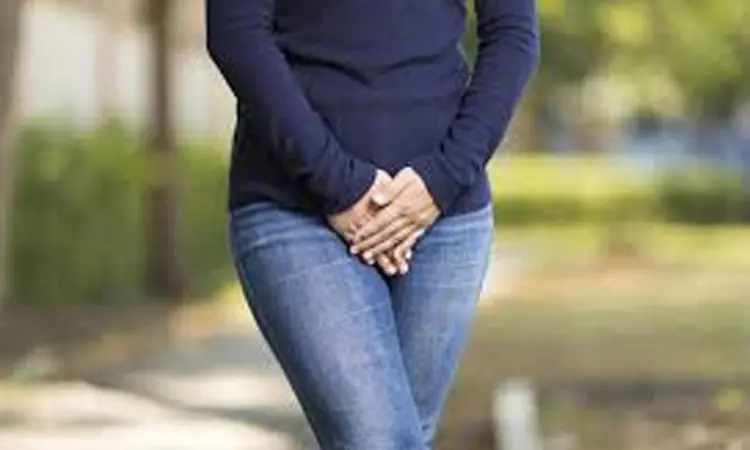- Home
- Medical news & Guidelines
- Anesthesiology
- Cardiology and CTVS
- Critical Care
- Dentistry
- Dermatology
- Diabetes and Endocrinology
- ENT
- Gastroenterology
- Medicine
- Nephrology
- Neurology
- Obstretics-Gynaecology
- Oncology
- Ophthalmology
- Orthopaedics
- Pediatrics-Neonatology
- Psychiatry
- Pulmonology
- Radiology
- Surgery
- Urology
- Laboratory Medicine
- Diet
- Nursing
- Paramedical
- Physiotherapy
- Health news
- Fact Check
- Bone Health Fact Check
- Brain Health Fact Check
- Cancer Related Fact Check
- Child Care Fact Check
- Dental and oral health fact check
- Diabetes and metabolic health fact check
- Diet and Nutrition Fact Check
- Eye and ENT Care Fact Check
- Fitness fact check
- Gut health fact check
- Heart health fact check
- Kidney health fact check
- Medical education fact check
- Men's health fact check
- Respiratory fact check
- Skin and hair care fact check
- Vaccine and Immunization fact check
- Women's health fact check
- AYUSH
- State News
- Andaman and Nicobar Islands
- Andhra Pradesh
- Arunachal Pradesh
- Assam
- Bihar
- Chandigarh
- Chattisgarh
- Dadra and Nagar Haveli
- Daman and Diu
- Delhi
- Goa
- Gujarat
- Haryana
- Himachal Pradesh
- Jammu & Kashmir
- Jharkhand
- Karnataka
- Kerala
- Ladakh
- Lakshadweep
- Madhya Pradesh
- Maharashtra
- Manipur
- Meghalaya
- Mizoram
- Nagaland
- Odisha
- Puducherry
- Punjab
- Rajasthan
- Sikkim
- Tamil Nadu
- Telangana
- Tripura
- Uttar Pradesh
- Uttrakhand
- West Bengal
- Medical Education
- Industry
Researchers discover non-invasive treatment for overactive bladder

LOS ANGELES -Neuromodulation is a therapeutic technique that is well-established in the treatment of idiopathic Lower urinary tract (LUT) dysfunction such as the overactive bladder (OAB). Researchers have recently developed a novel neuromodulation approach, Transcutaneous Electrical Spinal Cord Neuromodulation (TESCoN) and demonstrated its acute effects on LUT dysfunction after spinal cord injury (SCI) during urodynamic studies. Urologists at Keck Medicine of USC have launched a clinical trial to evaluate the effectiveness of spinal cord stimulation in patients with an overactive bladder due to neurological conditions, such as a spinal cord injury or stroke, and idiopathic causes.
Researchers will use a technique known as Transcutaneous Electrical Spinal Cord Neuromodulation (TESCoN), a noninvasive therapy that delivers low-intensity electric impulses to the spinal cord. The trial follows a recent study published in Frontiers in Systems Neuroscience led by Evgeniy Kreydin, MD, a Keck Medicine urologist and assistant professor of clinical urology at the Keck School of Medicine of USC. Kreydin and colleagues treated 14 patients with bladder dysfunction due to either spinal cord injury, stroke, multiple sclerosis or idiopathic cause with spinal cord stimulation sessions three times a week for eight weeks.
All patients reported improved bladder sensation as well as a reduced number of incontinence episodes and night-time bladder voiding.An overactive bladder causes several urological problems, such as frequent urination and incontinence. Existing treatments for the condition can cause adverse side-effects or require invasive, highly specialized procedures."TESCoN is well-tolerated by patients and easy for doctors to administer," says Kreydin, who will be co-investigating the trial along with Keck Medicine urologist David Ginsberg, MD, a professor of clinical urology at the Keck School.
In this double-blinded, sham-controlled trial, half the participants will receive two one-hour sessions of TESCoN per week over 12 weeks. The stimulation will be applied via electrodes attached to a device that emits low-intensity impulses through adhesive pads placed on the patient's back. The other half of the participants will receive a placebo or sham stimulation over course of the trial. The trial will track subjects' number of daily urination and incontinence episodes over 72-hour periods. Researchers will then compare the data between the beginning and the conclusion of the trial, and between those receiving the real or sham stimulation. In addition, trial participants will complete bladder symptom questionnaires before and after receiving the treatments to further track improvement.TESCoN is developed by the medical device company spineX. Company founders will be initiating discussions with the U.S. Food and Drug Administration to gain regulatory approval for the procedure.
The exact mechanism of how TESCoN improves bladder function is not known. Kreydin speculates that the stimulation retrains the spinal neural networks to properly store and void urine and to regain bladder sensation. For patients with a spinal cord injury or a neurological disorder, the nerves controlling the bladder are either cut off or disrupted."The ultimate goal of the trial is to improve peoples' sense of well-being," says Kreydin. "An overactive bladder can cause discomfort, inconvenience and embarrassment. The more control patients have over their bladders, the more control they have over their lives.
"For further reference log on to:
Dr Kamal Kant Kohli-MBBS, DTCD- a chest specialist with more than 30 years of practice and a flair for writing clinical articles, Dr Kamal Kant Kohli joined Medical Dialogues as a Chief Editor of Medical News. Besides writing articles, as an editor, he proofreads and verifies all the medical content published on Medical Dialogues including those coming from journals, studies,medical conferences,guidelines etc. Email: drkohli@medicaldialogues.in. Contact no. 011-43720751


